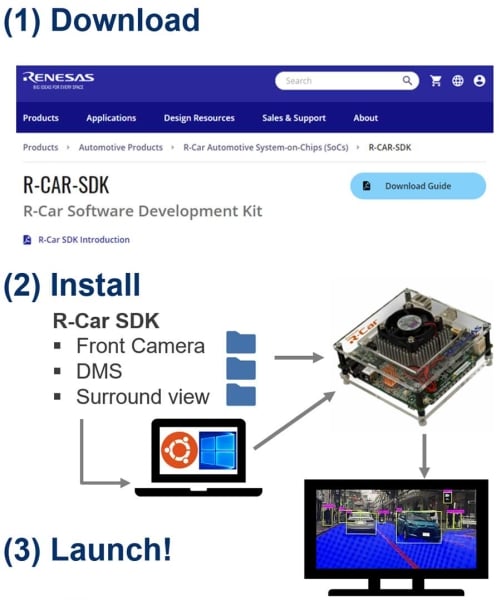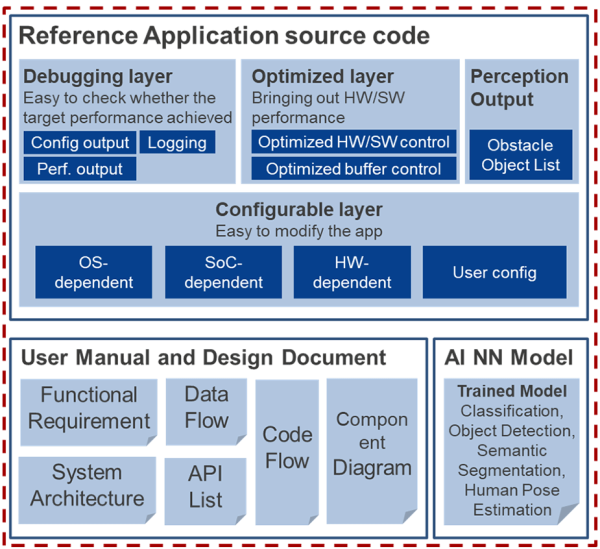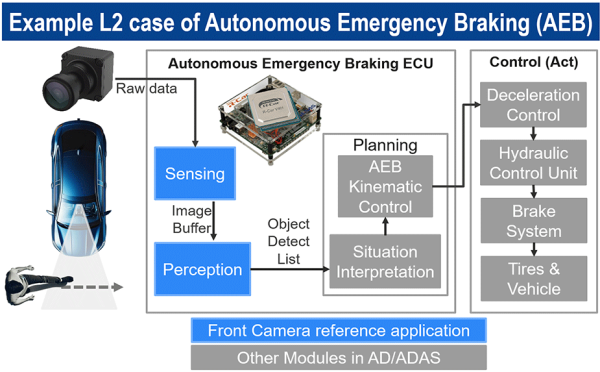The Essence of ADAS in Preventing Accidents
Advanced Driver Assistance System (ADAS) technology is a beacon of hope in mitigating road accidents. A prime example is the Autonomous Emergency Braking (AEB) system. AEB acts as an alert co-pilot, detecting potential collisions and initiating preventive measures. It employs sensors to recognize objects in the vehicle's path, provides visual alerts, and autonomously applies brakes to avert imminent crashes. However, for a car to effectively prevent accidents, it needs "eyes" akin to a human being. Here, sensors like cameras and radar play a pivotal role. These devices feed crucial information to the car's Electronic Control Unit (ECU), swiftly deciding actions like braking or swerving to circumvent obstacles.
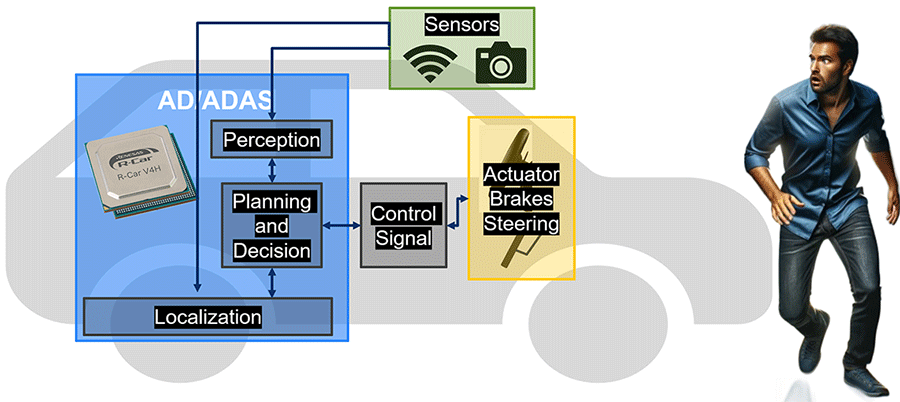
Figure 1. System Architecture Diagram for AD/ADAS
The Complex Journey of ADAS Development
Developing ADAS technology is a complex, multi-faceted process. The development journey involves intricate components and performance optimization. The lengthiness of this process is attributed to two significant challenges:
- Developers often grapple with selecting appropriate hardware and software for different algorithms and use cases. With over 13,000 pages of documentation, the integration process is daunting.
- Deploying AI neural networks on an edge device and optimizing for the best performance and accuracy is a significant challenge.

Figure 2. Complexity of AD/ADAS and the Pain Point of the Developer Journey
Streamlining ADAS Development: Our ADAS Fast Track Solution
Our ADAS Fast Track Solution, leveraging the R-Car platform, aims to clear these challenges. It is an invaluable tool for engineers and developers, providing a well-defined starting point for understanding and applying ADAS technology. It addresses these challenges effectively. It encompasses "Easy-to-Start", "Easy-to-Design" and "Easy-to-Integrate" features.
We provide three main perception reference applications to solve this challenge: DMS or Driver Monitoring System, Front Camera (FC), and Surrounding View (SV).
- Driver Monitoring System (DMS): Ensuring Driver Alertness
At the heart of driver safety is understanding the driver's state of alertness. The DMS is a groundbreaking application in this regard. It employs advanced camera sensors to scrutinize the driver's behavior, assessing their level of alertness. This system is particularly adept at detecting signs of distraction. Then, the car can issue warnings when necessary by providing real-time driver behavior output, prompting the driver to refocus or take a break. This proactive approach is critical in preventing accidents caused by driver inattention. - Front Camera: The Vanguard of Collision Avoidance
The Front camera application is pivotal, especially in the context of the Automatic Emergency Braking (AEB) feature. It acts as the vehicle's eyes, constantly scanning the road ahead. By detecting obstacles, the Front camera provides a comprehensive object list to the planning module of the ADAS. This information is crucial for the system to make informed decisions, such as applying brakes automatically in case of imminent collision threats. The role of the Front camera in AEB exemplifies its importance in modern vehicle safety systems. - Surrounding View: A Comprehensive Safety Net
While attention to the front is critical, safety demands awareness of the entire vehicular surroundings. This is where the Surrounding View application comes into play. Equipped with four strategically placed cameras, this system offers a comprehensive view of the vehicle's surroundings. Each camera contributes to an object list, ensuring no blind spot goes unnoticed. Providing a 360-degree view is particularly beneficial for maneuvers like lane changes or parking, where peripheral vision is critical. By making blind spots noticeable, the Surrounding View application significantly reduces the risk of accidents during these essential driving maneuvers.
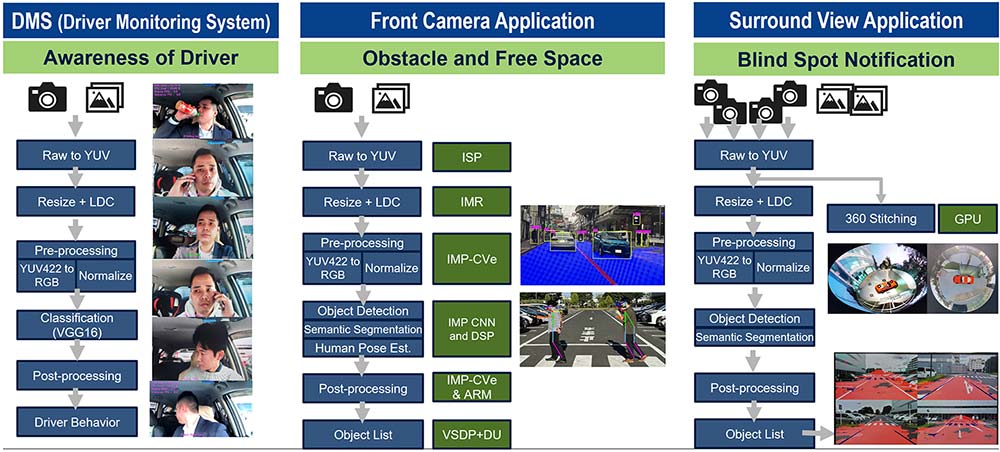
Figure 6. Overcome Perception and Video Pipeline with DMS/FC/SV
These applications are more than theoretical solutions; these solutions are bundled with the R-Car SDK and are already available to users by downloading the SDK. We have already seen real Turn Around Time (TAT) at our customers and how our reference applications are practical in helping them reduce their time-to-market.
In summary, our comprehensive ADAS Fast Track Solution has significantly streamlined the journey of ADAS development with its complexity and challenges. By integrating the R-Car platform, we address critical needs in the developer's journey, from the initial design phase to deployment. Our solution encompasses the "Easy-to-Start", "Easy-to-Design" and "Easy-to-Integrate" features, simplifying the ADAS development process. With groundbreaking applications like the Driver Monitoring System, Front Camera, and Surrounding View, we not only enhance vehicle safety but also significantly reduce the time-to-market for our clients, as evidenced by our successful collaborations with industry leaders. We invite readers to join the conversation and share their thoughts on how such technological advancements shape the future of automotive safety.

